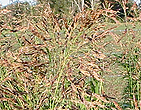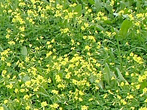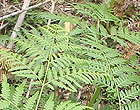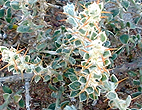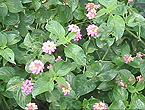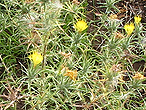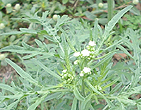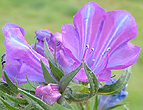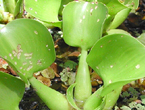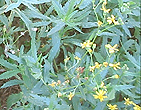module 1
An introduction to weeds
Objectives
At the end of this topic, you will be able to:
- be able to define the term 'weed'
- list at least eight different characteristics of the ‘ideal’ weed
- differentiate between and give examples of alien, naturalised, and native plants
- describe the basis on which many weeds are classified
- list in general terms the impacts of weeds in a range of land use systems
- identify the main steps to effective weed management.
Module outline
Introduction
When considering weeds and weed management it is important to understand what constitutes a weed. There are a number of definitions of what constitutes a weed. These were considered in the Agricultural Pests course (AGRC2002) that you may have taken at an earlier stage in your degree and are discussed again in your textbook.
|
In the section "A weed defined" you will notice a number of definitions and some examples of serious weeds. You should note from this reading that many weed definitions are related to agricultural and horticultural pursuits; however, weeds are also an important part of flora of non-agricultural ecosystems.
The reading above also considers a variety of ways of classifying weeds. Such classification systems can often be more useful than might be obvious at first. The ability to classify weeds by syndromes can aid management. Successful strategies to manage one weed species may be adapted to manage weeds of the same syndrome.
Go to Activity 1-1 |
While weeds in their widest sense may be defined as unwanted plants, not all unwanted plants become major weed problems. There are certain characteristics that serious weeds often have. Most importantly, this includes:
- the build up of large seed banks. Such seed banks build up quickly in annual weed species, but more slowly for woody weeds.
- in native ecosystems, most weed species are plants that come from a region of the world with a similar climate
- in contrast, weeds of agricultural systems may be widespread and often adapt to changing circumstances
The following reading considers this issue in detail and points out why certain species become troublesome weeds. There are numerous examples given in the reading.
|
The plant species that have recently naturalised in Australia have come from many regions of the world (Table 1.1). Most species that become naturalised come from areas with similar climates to Australia such as South Africa, South America and the Mediterranean.
Contrary to popular belief, agriculture has not been responsible for a large number of naturalised species in Australia, for example. Most recently naturalised species were originally introduced for ornamental purposes (Table 1.2).
Go to Activity 1-2 |
The aims of weed management
The imperative for weed management is the impact that weeds
have on human activity. These impacts will vary according to the circumstances
as indicated by the definition of a weed. These are considered in the following
reading.
|
||||||||||||||||||||
You should note how the imperatives for weed management are directly related to economic losses caused by weeds. This area will be further explored in Module 3. This reading also discusses the prerequisites for weed management. It is vital to understand these points if weed management is to be effective.
Summary
The occurrence of pathogens has impacts on human society directly through food preferences, health and living standards, and indirectly through areas such as literature and trade. Some examples from history are outlined here.
Weeds affect the activities of most people in some way and on a world scale they reduce crop production by about 10% (Sindel, 2000). A weed may be regarded as a plant which is ‘out of place’, but in an ecological sense, it is a plant that is very much ‘in place’ because it is well adapted to the prevailing conditions. Most weeds in Australia are alien plants; that is, they have been introduced from overseas. The aim of weed management is to reduce the impact that weeds have on human activity. Effective and appropriate weed management will be based on correct weed identification, and on an understanding of weed ecology and weed impact.
Go to Activity 1-3 |
References and further reading
The following references are either shown in Module 1 or provide additonal information.
Groves RH 1998, Recent Incursions of Weeds to Australia 1971-1995, CRC for Weed Management Systems, Technical Series No. 3, Glen Osmond, Australia.
Michael, PW 1994 ‘Alien plants’, in RH Groves (ed.) Australian Vegetation, 2nd edn, Cambridge University Press, Cambridge, pp. 57-83.
Sindel, BM 2000, Australian Weed Management Systems, RG and FJ Richardson, Melbourne.
Rozefelds, ACF, Cave, L, Morris, DI and Buchanan, AM 1999, ‘The weed invasion of Tasmania since 1970’, Australian Journal of Botany, vol. 47, pp. 23-48.
Self assessmentDo you know:
|
